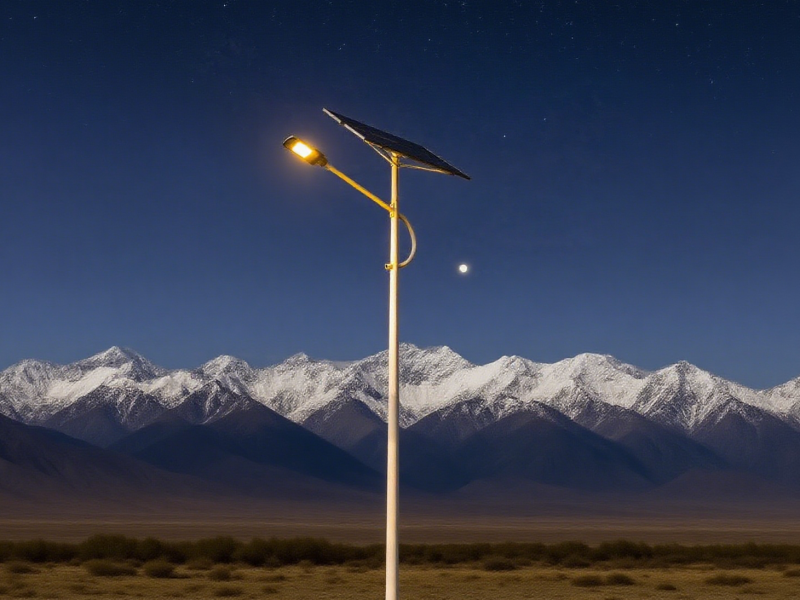When selecting outdoor street lamps in plateau areas, it’s crucial to prioritize adaptability to unique environments such as low temperatures, strong radiation, low air pressure, and frequent winds, sand, and snow. Lighting efficiency and ease of operation, and maintenance should also be considered. Specifically, consider the following key factors. Learn more with top LED outdoor street lamp manufacturer TIANXIANG.
1. Choose a low-temperature-compatible LED light source
The plateau has a large temperature swing between day and night (reaching over 30°C, often dropping below -20°C at night). Traditional sodium lamps are slow to start and experience significant light efficiency degradation at low temperatures. Highly cold-resistant LED light sources (operating within a -40°C to 60°C) are more suitable. Choose a product with a wide-temperature driver to ensure flicker-free operation at low temperatures, instant start-up, and a luminous efficacy of 130 lm/W or higher. This balances energy efficiency with high penetration to withstand the dense fog and snowfall common in plateau weather.
2. The lamp body must be corrosion-resistant and typhoon-resistant
The intensity of ultraviolet radiation on the plateau is 1.5-2 times higher than on the plains, and the plateau is prone to wind, sand, and accumulated ice and snow. The lamp body must be resistant to UV aging and high and low temperature corrosion to prevent cracking and paint peeling. The lampshade should be made of high-transmittance PC material (transmittance ≥ 90%) and impact-resistant to prevent damage from wind, sand, and debris. The structural design must meet a wind resistance rating of ≥ 12, and the connection between the lamp arm and the pole must be reinforced to prevent strong winds from causing the lamp to tilt or fall.
3. The lamp must be sealed and waterproof
The plateau has a large temperature swing between day and night, which can easily cause condensation. In some areas, rain and snow are frequent. Therefore, the lamp body must have an IP rating of at least IP66. High- and low-temperature-resistant silicone seals should be used at the joints of the lamp body to prevent rain and moisture from seeping in and causing internal short circuits. A built-in breathing valve should balance the air pressure inside and outside the lamp, reducing condensation and protecting the driver and LED chip life (recommended design life ≥ 50,000 hours).
4. Functional Adaptation to the Special Needs of Plateaus
If used in remote plateau areas (where the power grid is unstable), a solar power system can be used. High-efficiency monocrystalline silicon solar panels and low-temperature lithium batteries (operating temperature -30°C to 50°C) can be used to ensure adequate energy storage in winter. Intelligent control (such as light-sensing automatic on/off and remote dimming) reduces manual operation and maintenance costs (which are difficult to access and require more maintenance in plateaus). A warm white light color temperature of 3000K to 4000K is recommended to avoid glare caused by higher color temperatures (such as 6000K cool white light) in snowy environments, improving driving safety.
5. Ensure Compliance and Reliability
Select products that have passed the National Compulsory Product Certification (3C) and have undergone special testing for plateau environments. Manufacturers offering warranties of at least 5 years are also preferred to avoid long-term downtime due to equipment failure (repair cycles are long in plateaus).
The above is a brief introduction from the top LED outdoor street lamp manufacturer TIANXIANG. If you would like to learn more, please contact us.
Post time: Sep-03-2025

